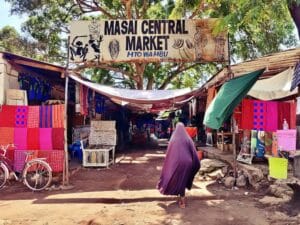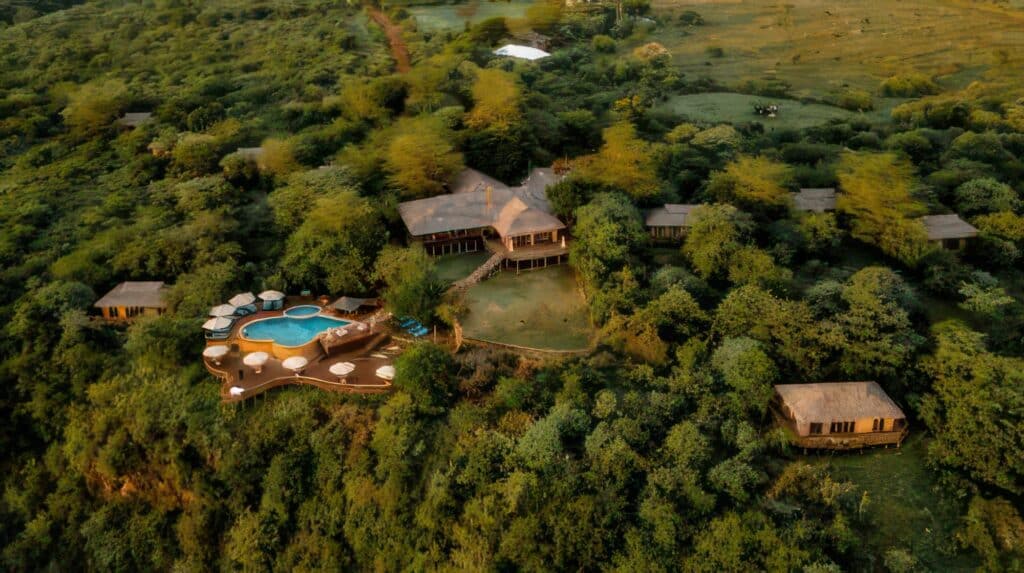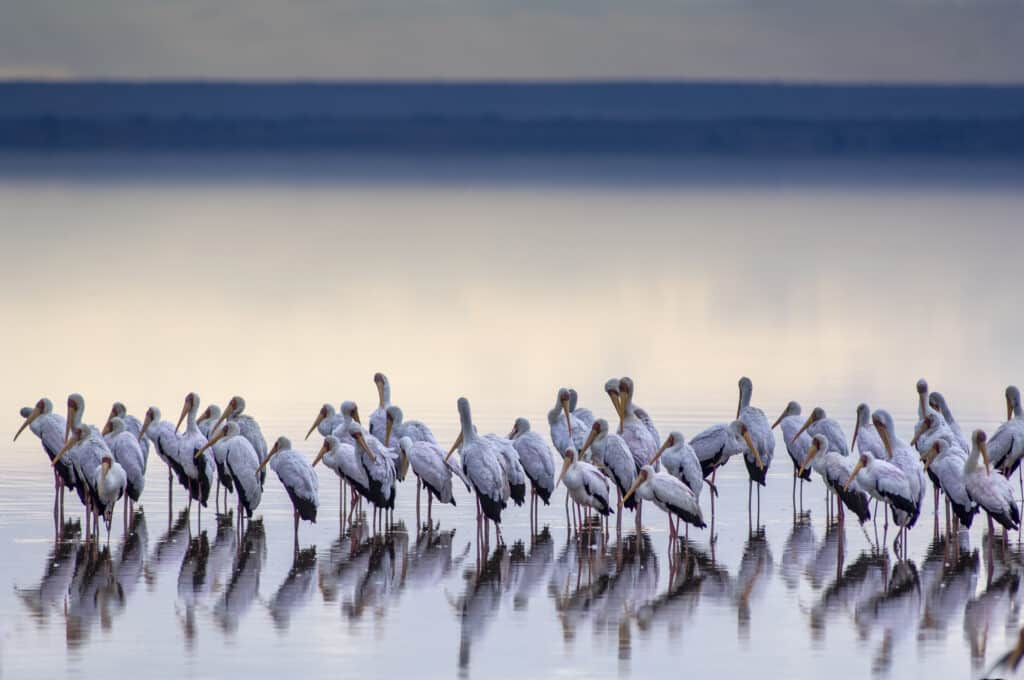Going on a safari is an exciting adventure. Like any journey, the proper attire is essential for comfort and safety.
Safari could be its own color—how it conjures up images of ultimate safari fashion of full-body khaki outfits, oversized broad-brimmed hats, and sturdy boots. These days you’ll still see many travelers in Africa adhering to such overly romanticized fashion choices.
However, there’s no need to compromise style for functionality. This ultimate safari fashion guide ensures you are runway-ready from head to toe in the wilderness.
The Fashion Safari Outfits

Embarking on an African safari is a dream for many. Witnessing immense landscapes, encountering magnificent wildlife, and experiencing a whole different way of life can be a life-changing adventure.
Much of the success of your trip and experience depends on the right kind of preparation. Not least of which is knowing what to wear – your “safari outfit.”
Here, a guide to ensure your African adventure, in safari style, leaves you well-prepared and always making a statement. Remember, safari style is not just about looking stylish.
It’s about mixing practicality and fashion to create a trendy and valuable look. A safari outfit doesn’t just help you fit into the wild African landscape. It also brings comfort during outdoor adventures and readiness for activities at safari camps.
The Essentials of a Safari Hat
A safari hat is vital for your African adventure, combining style, sun protection, and practicality during game drives. Broad-brimmed hats define safari outfit ideas. They come in different shapes designed to compliment your face structure and hairstyle while providing protection.
Canvas hats are durable and ideal for intense weather and rigorous game drives. On the other hand, foldable wool blend hats offer a touch of sophistication and warmth, perfect for cooler climates and evening drives.
Your choice between a canvas or wool blend hat should reflect your needs, the environment, and aesthetic preferences. In conclusion, a perfect safari hat isn’t just about style – it combines protection, comfort, and fashion.
So, pick the right wide-brimmed hat and explore the wild in style.
Protective Sunglasses – Your Eye Shield
As you prepare for an adventure like most safaris, a sturdy pair of UV-protected sunglasses emerges as an essential accessory. The African terrain, while beautiful, comes with intense sunlight and harsh glares that can make your expedition challenging. But with the correct set of sunglasses, you can mitigate these conditions while relishing the beauty of Africa’s wildlife.
Akin to a shield for your eyes, UV-protected sunglasses act as a bulwark against the potent solar radiation that characterizes most safaris. Damaging UV rays can harm your vision over time, making sunglasses more than just a style accessory but a practical and necessary tool for eye health.
On a safari, there are a lot of bright colors and beautiful views. Wearing a pair of good sunglasses can make things even better. They help block strong sunlight so you can see animals more efficiently. That way, you won’t miss seeing any incredible African animals.
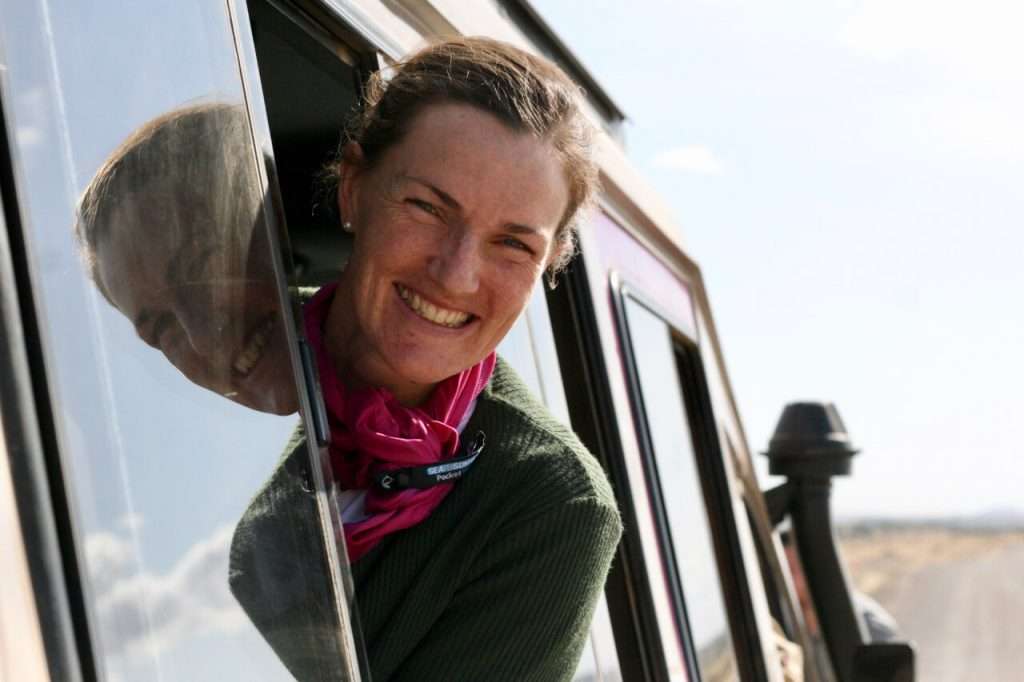
Safari Shirts and T-Shirts – Keeping It Cool and Comfy

Venturing into nature reserves or going on a safari calls for appropriate attire. A pair of comfortable, durable pants is a must-have to complement your airy cotton or linen shirts.
These pants should be breathable yet resistant to any outdoor unpredictability. Retaining a neutral color palette is equally essential. Such a color scheme helps you blend seamlessly with the environment.
Moreover, it minimizes the risk of attracting local fauna or pesky tsetse flies.
Durable Safari Trousers
The perfect pair of trousers is essential for a memorable safari adventure. Lightweight material ensures comfort and is crucial for those hot, dry conditions. Multiple pockets provide handy storage for important items, adding a practical touch.
Adjustability, too, is essential for adapting to temperature changes. Convertible trousers afford full-length protection when necessary, guarding against potential hazards. They can also transform into shorts, offering a refreshing alternative amidst warm settings.
Safari Ankle Boots – Your Foot’s Best Friend
The last thing you want on your trail is sore feet. Good safari boots should be comfortable—but, more importantly, provide excellent grip and protection. Choose from ankle-high boots for optimal protection or safari shoes for increased flexibility.
Lastly, pay attention to your footwear selection to complement your breezy attire. Depending on the terrain, opt for sturdy, closed-toe shoes or boots in neutral colors to blend with your attire and landscape.
Having the right shoes is vital on a safari. They must be comfy for long walks and protect your feet from danger. When your whole safari outfit, even your shoes, lets your skin breathe and keeps bugs away, you can relax and enjoy the fantastic nature around you.
Rain Jacket
Taking a safari trip to Tanzania? Don’t forget a rain jacket! The weather there can change, so you might get wet from unexpected rain.
Also, mornings and nights can get quite cold, and your jacket can help keep you warm. For a good safari experience, choose a light rain jacket that breathes and is strong. This makes sure you are comfy on your trip.
Hooded rain jackets that can be packed small are even better. Extra pockets can store your small items. Being ready for anything is good when going on a safari in Tanzania. So, always remember, your rain jacket is like a good friend helping you on your adventure.
Accessories – The Finishing Touch
To complete your look, think about getting safari add-ons. Use scarves to protect your neck from getting sunburned. Gloves can help you stay warm during your cool early morning rides.
Also, strong belts can keep your outfit in place. Remember, these extra items should make you look great. But more than that, they are also meant to keep you comfy during your trip.
Putting It All Together – Creating the Perfect Safari Outfit
With all the pieces of the fashion puzzle ready, let’s put them together. You can pair a beige safari jacket with dark khakis or a khaki shirt with brown trousers. The key is maintaining a complementary color palette, tying your sunglasses, hat, and boots to your core outfit.
Moreover, never forget about choosing comfort over being unnecessarily fashionable in the wild, though it’s all up to you. The most important thing is that you are comfortable during your safari tour, making your experience more unforgettable.
Conclusion
In conclusion, merging fashion and functionality is crucial while embarking on a safari. Balancing your style with the practicalities your adventure demands would ensure you simultaneously conquer the wilderness and capture the perfect safari-chic Instagram shots! Don your hat, slip on those boots, and set off on your fashion runway amidst the sprawling savannahs.
Book your safari today or see more content like this.
Frequently Asked Questions (FAQs)
What does the term “Fashion Safari” mean?
Fashion Safari refers to a style trend inspired by safari clothing and the adventurous spirit of African landscapes. This look combines practicality and sophistication, incorporating earthy tones, natural fabrics, and functional details.
The style may include khakis, breathable linens, and cargo-style pockets. Famous fashion houses have popularized the trend in their collections. Fashion Safari embraces the explorer’s spirit with elements of comfort and adaptability, making it a versatile wardrobe addition.
How can I incorporate a safari theme into my wardrobe?
Incorporating a safari theme into your wardrobe begins with introducing essential garments such as cargo pants, utility jackets, and khaki shirts or skirts. Earthy tones like beige, olive, and tan are vital colors.
Opt for fabrics like linen and cotton, ensuring breathability and comfort. Add accessories like wide-brimmed hats, woven belts, and leather or canvas bags to enhance the explorer vibe.
Remember the importance of layering; it’s perfect for transitioning day to night or adapting to temperature changes.
What are the key elements of a safari-inspired fashion look?
Key elements of a safari-inspired fashion look include functional details, natural fabrics, and versatile, earthy tones. The style is characterized by practical features such as cargo pockets, utility belts, epaulets, and roll-up sleeves.
Choosing durable and breathable fabrics like cotton and linen adds to the authenticity of the look. Neutral colors such as beige, khaki, and olive green are the foundation for a safari-inspired outfit. Combining these elements creates a practical and stylish ensemble.
Are there specific colors associated with safari fashion?
Safari fashion is known for its earthy, neutral color palette. Key colors associated with this style include khaki, beige, tan, olive green, and various shades of brown.
These colors reflect the natural surroundings of the African savannah, complementing the clothing’s functionality and nature-inspired aesthetic. While pops of color can enhance the look, maintain balance by sticking to one or two accent colors, such as deep red or burnt orange.
Which fabrics are most commonly used in safari fashion items?
Safari fashion items typically feature natural and breathable materials for comfort and durability during outdoor adventures. Popular fabrics include cotton, linen, and lightweight canvas.
These fabrics provide excellent breathability, keeping you cool in warm climates while offering enough insulation in cooler temperatures. Quick-drying and moisture-wicking materials are also favorable for safari fashion. This is because they enhance practicality and resilience, catering to various environments.
Can safari fashion be worn in urban environments?
Safari fashion can seamlessly transition from the wilderness to urban environments. The key lies in selecting versatile pieces and tailoring them to fit a more urban aesthetic.
Pair a khaki shirtdress with ankle boots and a statement necklace for a chic city look, or dress up utility pants with a crisp white shirt and statement heels. Safari-inspired outerwear, such as a trench coat or utility jacket, can elevate a simple jeans-and-tee outfit, showcasing the style’s adaptability.
How can I style my outfit for a ‘Fashion Safari’ event?
To style your outfit for a ‘Fashion Safari’ event, select a few safari-inspired pieces, such as a khaki jumpsuit, tan pants, or utility shirt. Mix and match these pieces with contemporary items from your wardrobe, balancing safari elements and modern fashion.
Accessorize with statement jewelry, a wide-brimmed hat, or a functional yet stylish bag. Keep your look sophisticated by choosing well-fitted garments and avoiding an overly “costume-like” appearance.
Is safari fashion considered eco-friendly?
Safari clothes can be good for the environment. This depends on the materials used and how they are made. Using natural, earth-friendly fabrics like organic cotton or linen can help.
Clothing brands can also focus on ethics. Giving workers fair treatment and managing resources wisely helps the environment. Choosing long-lasting, well-made clothes lowers waste. This helps promote a smart, green approach to safari fashion.
What accessories go well with safari-themed outfits?
Various accessories can enhance safari-themed outfits, adding a touch of personal style. Wide-brimmed hats, such as a fedora or Panama hat, shield against the sun while elevating the look. Leather or canvas bags provide function and fashion, like a crossbody or a practical tote.
Woven belts accentuate the waistline, while statement jewelry, like bold necklaces or cuffs, can transition safari attire from day to night. Scarves in coordinating colors or animal prints can also add an extra layer of sophistication.
Is safari fashion suitable for all seasons?
Safari fashion can be suitable for all seasons, with slight adjustments to accommodate varying weather conditions. Layering is vital for optimizing the adaptability of the safari style.
During cooler months, incorporate heavier fabrics and outerwear, such as a woolen hat or a trench coat. Opt for breathable, lightweight fabrics like linen and cotton in warmer seasons to stay calm.
Accessories and color choices can also be adjusted to maintain a stylish, seasonally appropriate look.
How do you care for and maintain safari fashion items?
Caring for and maintaining safari fashion items typically requires following the manufacturer’s specific care instructions. In general, items made from natural fabrics, like cotton and linen, can be machine-washed on a gentle cycle with mild detergent.
Hang them to air-dry, keeping them away from direct sunlight to prevent fading. If needed, iron them with a warm setting. For materials like canvas and items with special parts, like leather details, follow the specific cleaning steps for their material.
Can I incorporate safari style into professional work attire?
You can include the safari style in your work clothes by picking smart, fitted items. You could pair a dress in a color inspired by nature with a well-shaped blazer. Or pair a khaki pencil skirt with a neat white blouse. This shows how you can bring safari fashion into your workplace.
Avoid overly casual items, like cargo pants, and instead choose refined, subtle safari elements. Statement jewelry or a safari-inspired scarf can add a touch of adventure to your office ensemble while maintaining a professional appearance.
What are the critical trends in safari fashion for the upcoming season?
The upcoming season’s key trends for safari fashion may include:
– The continued popularity of earth tones.
– The use of natural and sustainable fabrics.
– The incorporation of practical, functional details.
Boxy silhouettes like shirtdresses, jumpsuits, and high-waisted trousers will likely remain fashionable. Additionally, accessories such as wide-brimmed hats, woven belts, and leather or canvas bags are expected to maintain their prominence in safari-inspired fashion.
Where can I find inspiration for creating a safari fashion look?
Inspiration for creating a safari fashion look can be found in multiple sources. This includes fashion magazines, blogs, and social media platforms like Instagram and Pinterest. Look to celebrities and fashion influencers who have embraced the safari trend, observing how they’ve styled their ensembles.
Additionally, runway collections and lookbooks from brands known for their safari-inspired designs can be excellent resources for discovering new trends and ideas. Experiment with different pieces, materials, and accessories to create unique, personalized safari looks.
How can men incorporate safari fashion into their style?
Men can add safari fashion into their style by including main items. This includes khaki or cargo pants, safari jackets or vests, and hard-wearing button-up shirts in colors inspired by nature. Shoes can be helpful to boots or leather sandals for relaxed events.
A reliable wide-brimmed hat and a sturdy leather or canvas bag make great safari accessories. Remember, balance is essential – pair your safari pieces with classic or contemporary items to avoid looking too rugged or costumey.
What are some animal print elements often used in safari fashion?
Animal print is a trendy way to enhance the safari fashion theme. Leopard, cheetah, and zebra prints are common and can add a striking touch to your appearance.
These prints can be used in small ways, like a leopard print belt, scarf, or bag, or shown more boldly in clothes like a zebra-print dress or cheetah-print top. Like with any print, use only one animal-print item in each outfit to keep balance and not overpower your look.
How do you pair safari colors with other colorful items?
Pairing safari colors with other vibrant hues can create an appealing contrast that’s fashionable and unique. Earth tones in safari fashion, such as khaki, beige, and olive, make an excellent palette for adding pops of color.
For instance, a bright red blouse with khaki shorts or a royal blue dress under a safari jacket could create an attractive ensemble. Remember to maintain balance. Incorporate one or two colorful items per look without overwhelming the earthy, neutral base.

















